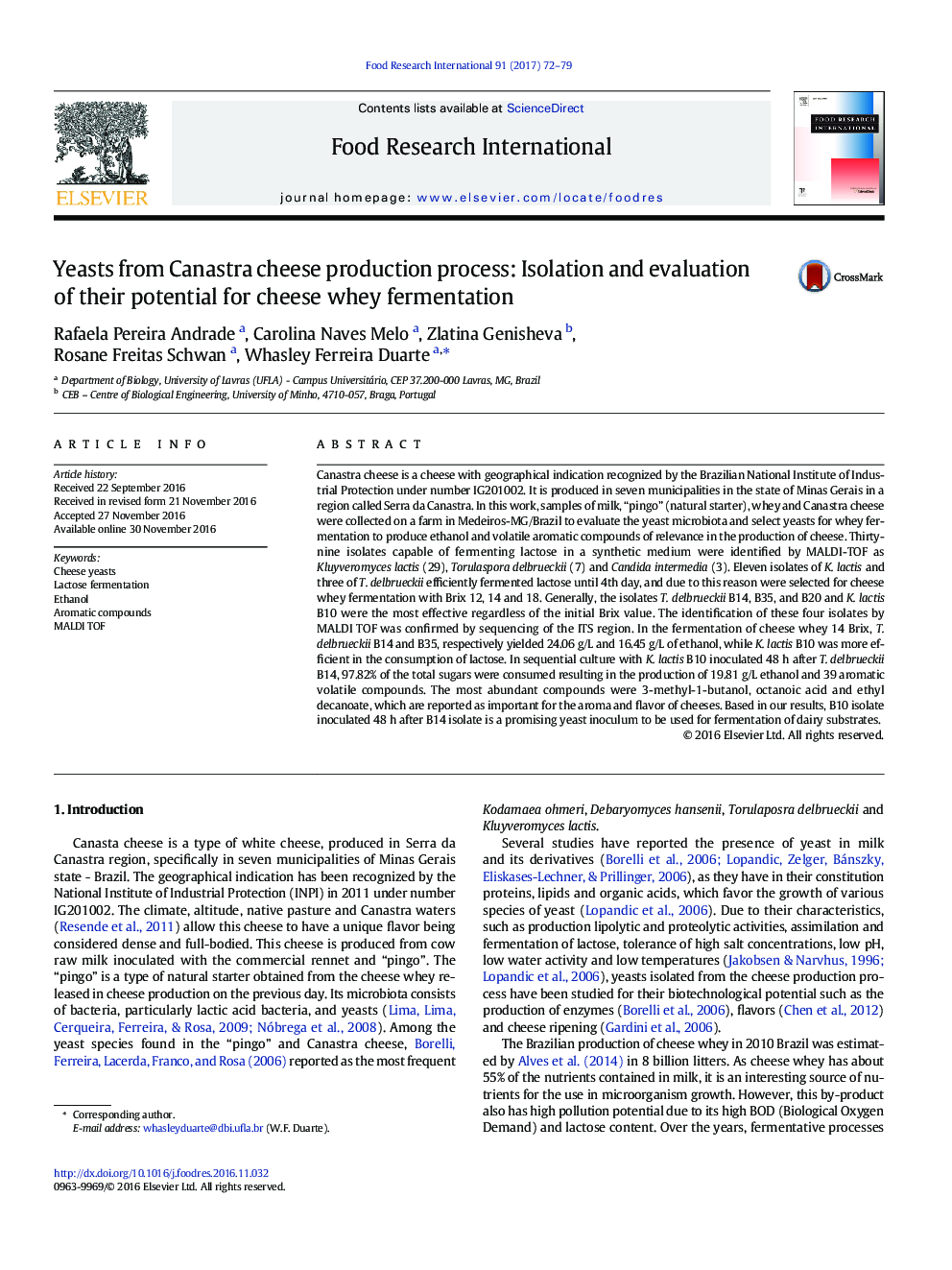| Article ID | Journal | Published Year | Pages | File Type |
|---|---|---|---|---|
| 5767872 | Food Research International | 2017 | 8 Pages |
â¢Different yeast species were isolated from Canastra cheese production process.â¢39 isolates fermented lactose in synthetic medium.â¢4 isolates efficiently fermented cheese whey.â¢The most efficient inoculum was Kluyveromyces lactis inoculated 48 h after Torulaspora delbrueckii.â¢Ethanol and 39 aromatic compounds were produced from cheese whey fermentation.
Canastra cheese is a cheese with geographical indication recognized by the Brazilian National Institute of Industrial Protection under number IG201002. It is produced in seven municipalities in the state of Minas Gerais in a region called Serra da Canastra. In this work, samples of milk, “pingo” (natural starter), whey and Canastra cheese were collected on a farm in Medeiros-MG/Brazil to evaluate the yeast microbiota and select yeasts for whey fermentation to produce ethanol and volatile aromatic compounds of relevance in the production of cheese. Thirty-nine isolates capable of fermenting lactose in a synthetic medium were identified by MALDI-TOF as Kluyveromyces lactis (29), Torulaspora delbrueckii (7) and Candida intermedia (3). Eleven isolates of K. lactis and three of T. delbrueckii efficiently fermented lactose until 4th day, and due to this reason were selected for cheese whey fermentation with Brix 12, 14 and 18. Generally, the isolates T. delbrueckii B14, B35, and B20 and K. lactis B10 were the most effective regardless of the initial Brix value. The identification of these four isolates by MALDI TOF was confirmed by sequencing of the ITS region. In the fermentation of cheese whey 14 Brix, T. delbrueckii B14 and B35, respectively yielded 24.06Â g/L and 16.45Â g/L of ethanol, while K. lactis B10 was more efficient in the consumption of lactose. In sequential culture with K. lactis B10 inoculated 48Â h after T. delbrueckii B14, 97.82% of the total sugars were consumed resulting in the production of 19.81Â g/L ethanol and 39 aromatic volatile compounds. The most abundant compounds were 3-methyl-1-butanol, octanoic acid and ethyl decanoate, which are reported as important for the aroma and flavor of cheeses. Based in our results, B10 isolate inoculated 48Â h after B14 isolate is a promising yeast inoculum to be used for fermentation of dairy substrates.
Graphical abstractDownload high-res image (76KB)Download full-size image
